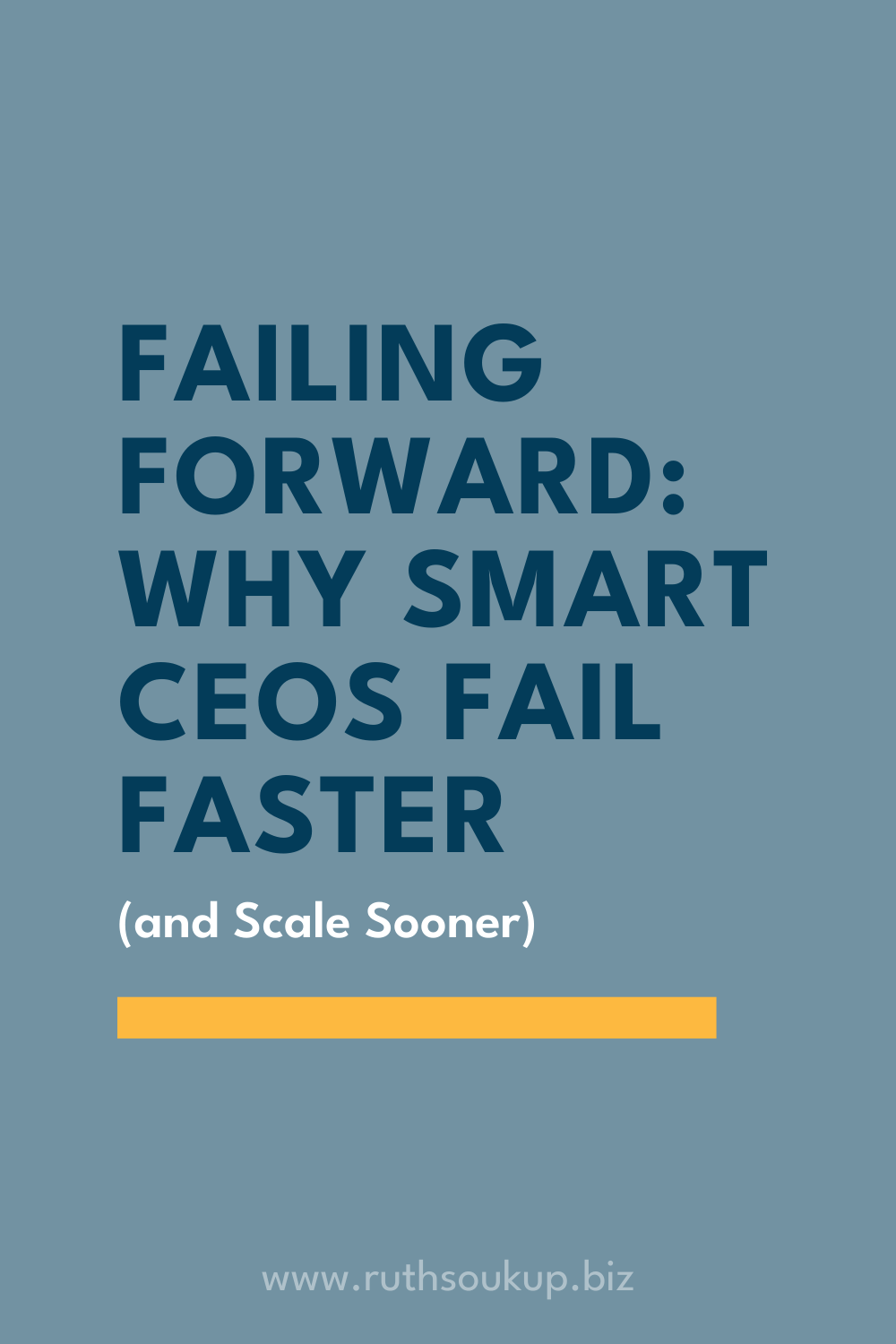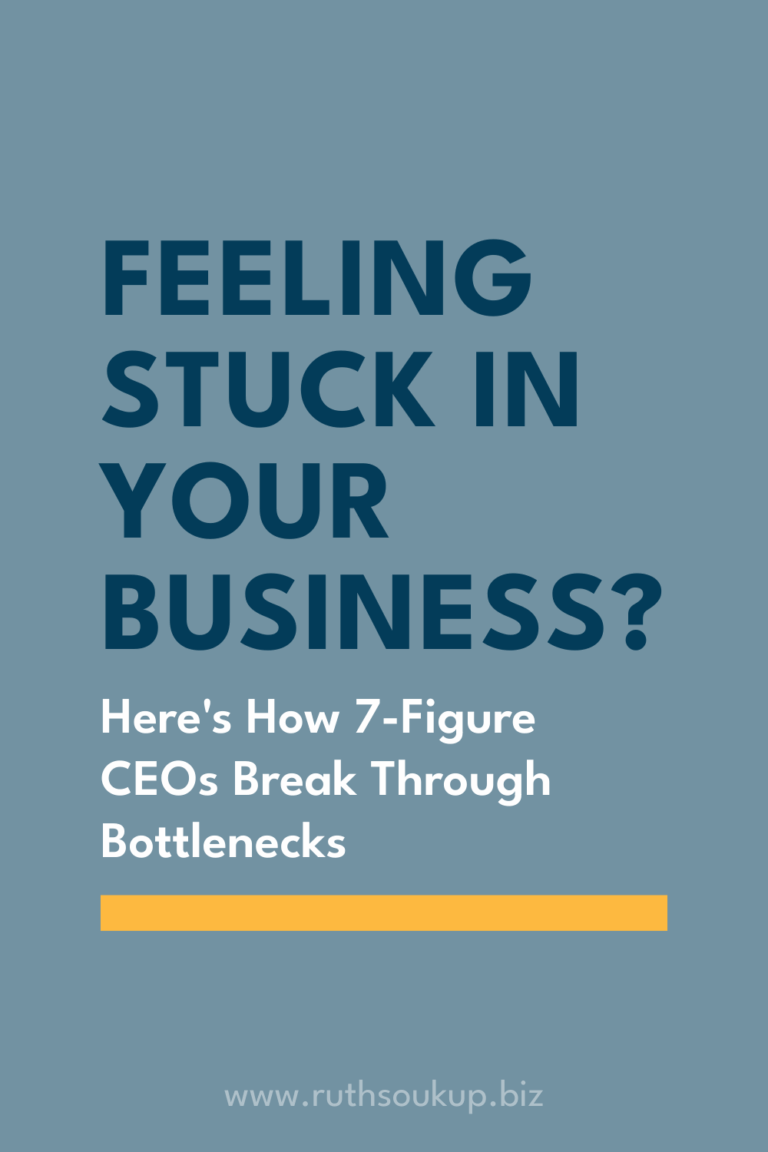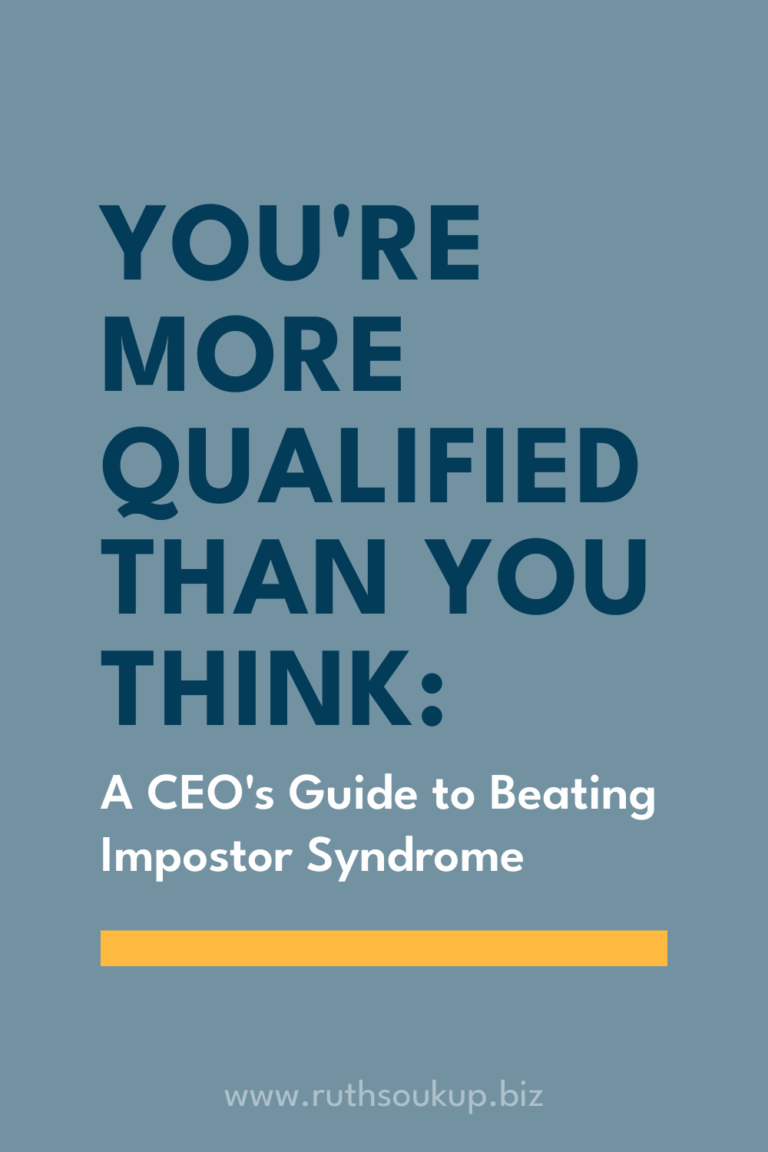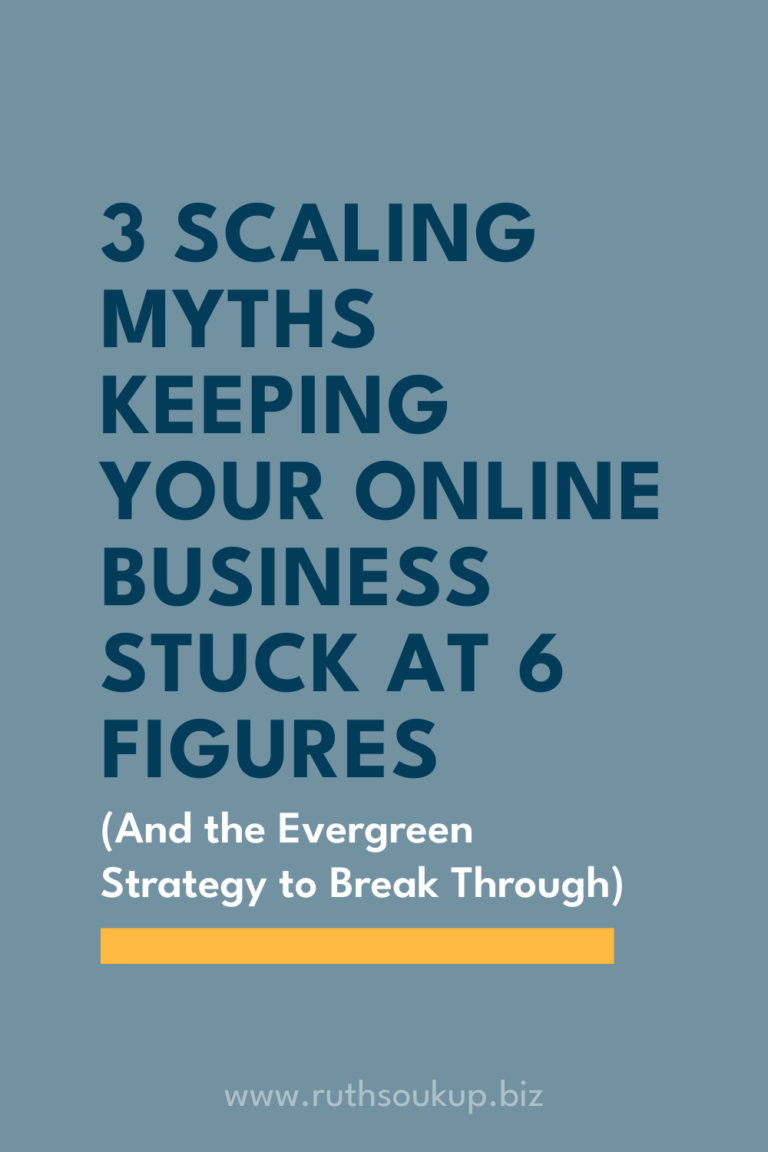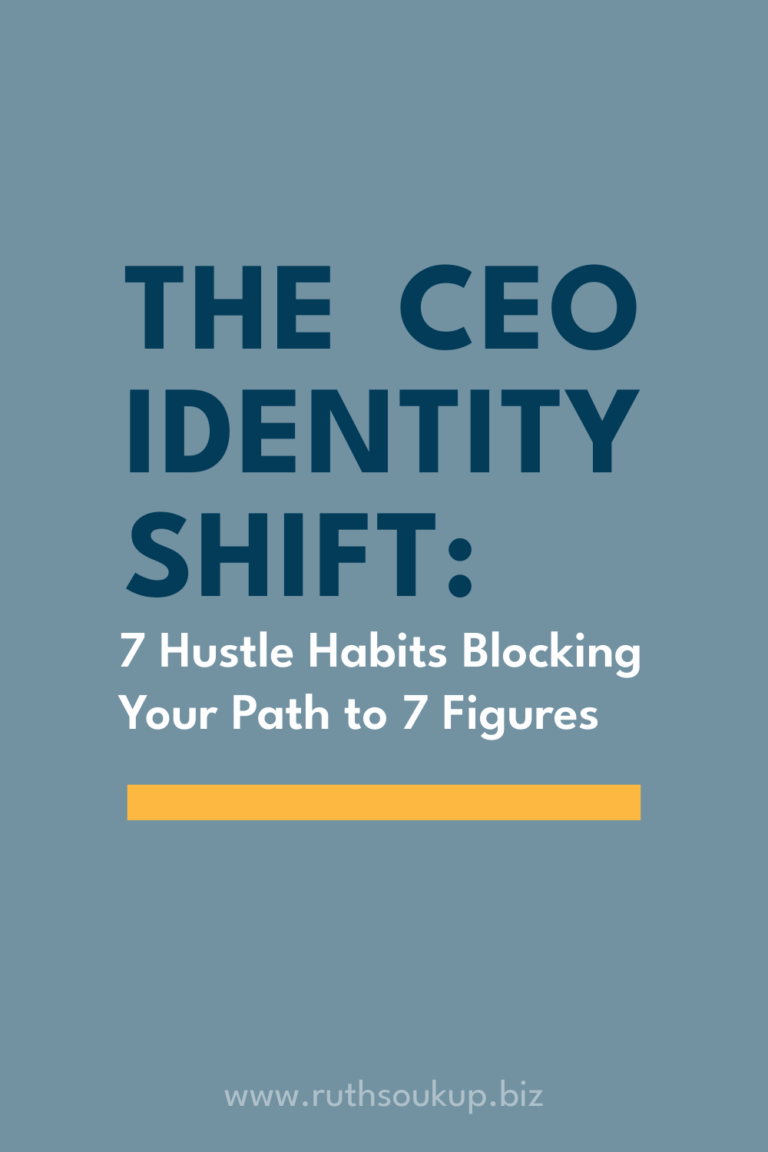Failing Forward: Why Smart CEOs Fail Faster (and Scale Sooner)
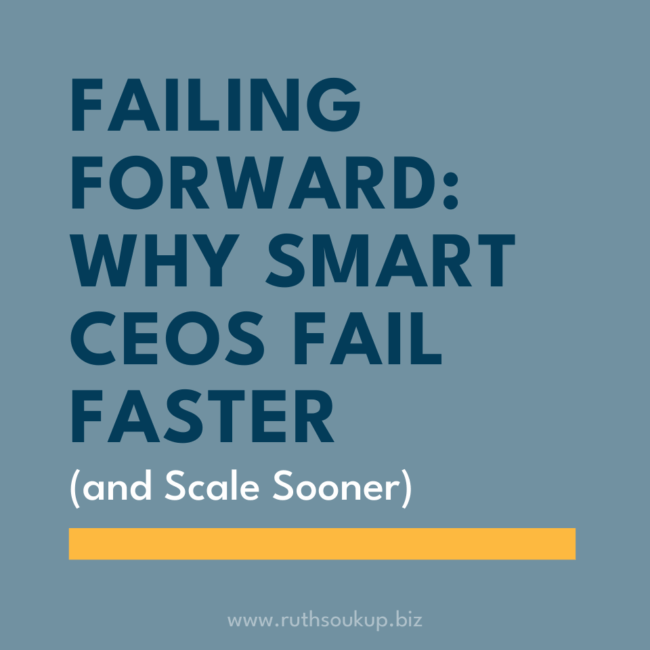
The Real Pain: Failure Isn’t the Enemy. Stagnation Is.
If you’re stuck obsessing over every misstep, you’re missing the point. In business, failure isn’t a stop sign—it’s a shortcut.
And yet, for high-achieving women who’ve built something real—the $100K course, the 5-figure launch, the growing email list—failure suddenly feels riskier. Like if you stumble now, you’ll lose everything you’ve worked so hard for.
I get it. I’ve been there, hiding in my office, staring at dismal launch numbers, wondering if I should just give up and get a “real job.” The fear is visceral, especially when you’ve already proven you can succeed.
But here’s the truth no one’s telling you:

It’s Time to Take Your Seat at the Big Table
Let’s be honest—there’s a difference between having a business… and being in the room where real growth happens.
Powerhouse is our private coaching experience for online entrepreneurs who are ready to scale past six figures—and step fully into their next-level leadership.
It’s the big kid’s table. The one where strategy matters more than hustle, and every conversation moves you forward.
If you know you’re meant for more, this is your invitation to join us.
At 6 figures, failure looks like a mess. At 7 figures, it looks like momentum.
The question isn’t if you’ll fail. It’s how fast you’ll learn.
Why? Because million-dollar businesses aren’t built on perfect execution. They’re built on rapid iteration. On testing, failing, fixing, and scaling—over and over again.
The entrepreneurs stuck at $150K-$300K aren’t failing too much. They’re failing too little. They’re playing it safe, tweaking the same broken systems, and hoping something magically changes.
In this post, we’re going to unpack why failing forward is the secret advantage of real CEOs—and exactly how to use it to scale smarter (not suffer longer).
How Failing at $500K Made Me a $5M CEO
I built my first brand to six figures on grit and Google traffic. No ads. No huge team. Just me, piecing it together and figuring it out.
Then I hit $500K… and slammed straight into a wall.
I was exhausted. Revenue was plateauing. Every “surefire” launch strategy I tried—bombed. (Ask me how it feels to spend $20K on ads and lose money on a launch.)
For a while, I kept trying to fix things by working harder. Hustling more. Staying up later, sending more emails, creating more content.
Spoiler alert: That didn’t work.
It wasn’t until I got brutally honest with myself—until I admitted what wasn’t working and stopped treating every failure like a personal indictment—that everything changed.
Here’s what that honesty looked like:
- I admitted my launches were inconsistent because I had no system—just adrenaline and hope
- I confronted the fact that my customer journey was full of leaks and dead ends
- I acknowledged that I was the bottleneck in my own business
This wasn’t fun. It wasn’t pretty. But it was necessary.
Instead of trying to be perfect, I started building a business that could handle imperfection. I stopped chasing trends. I started building systems. And I stopped viewing failures as disasters—and started seeing them as data.
That mindset shift was worth millions. Literally.
Within 18 months of embracing this “fail faster” approach, I had:
- Built an evergreen funnel that generated consistent daily sales
- Developed SOPs that allowed my team to operate without me
- Created a clear, strategic roadmap for scaling beyond 7 figures
The irony? Once I gave myself permission to fail—to test, iterate, and learn without judgment—I actually failed less. Because each “failure” became a stepping stone, not a stopping point.
The 3 Levels of Failing Forward
High-level entrepreneurs don’t avoid failure. They upgrade the way they fail.
Here’s what that looks like:
1. Failing at Your OFFER (Beginner CEO Stage)
- Misaligned messaging
- Low conversions
- Crickets at launch
- Sales calls that go nowhere
- Refund requests that sting
This is the stage where most people quit. They launch something, it flops, and they think: “I’m not cut out for this.” Or worse, “My idea is stupid.”
But what if your offer isn’t broken—just unrefined?
→ Instead of quitting: refine the promise. Tighten the positioning. Test smaller. Fail faster.
We’ve seen Powerhouse students go from zero sales to profitable offers simply by breaking things down, testing one small piece, and using that feedback to rebuild smarter.
The key? They didn’t take the failure personally. They treated it like data—and used it to pivot fast.
2. Failing at Your FUNNEL (Growth CEO Stage)
- Your audience is growing—but sales have stalled
- Cart abandons keep creeping up
- Ad spend isn’t translating into real ROI
- Email subscribers aren’t converting
- Your webinar gets signups, but few actual buyers
At this stage, your product isn’t the issue. People like it. Some even buy. But your growth is unpredictable—big spikes followed by silence, or lots of interest that never turns into sales.
→ This isn’t a product problem. It’s a system problem.
→ Instead of panicking: optimize your nurture, fix the leaks, and build for evergreen—not adrenaline.
I’ve been here myself—especially when we were scaling Thinlicious. We had ads running. We were getting leads. But something wasn’t clicking. The funnel just wasn’t converting the way it needed to.
So instead of throwing more money at the problem (or scrapping the offer entirely), we slowed down and started testing—headline tweaks, email sequence adjustments, funnel flow, pricing, positioning, even where we placed testimonials.
Not every test worked. A few totally flopped. But over time, the whole system got stronger. More efficient. More scalable.
The truth? If we hadn’t been willing to step back, test strategically, and stop trying to brute-force growth—we’d still be bleeding cash on a funnel that looked fine on the surface, but wasn’t built to scale.
3. Failing at Your TEAM (Scaling CEO Stage)
- You become the bottleneck
- Delegation feels harder than DIY
- Growth slows because you’re still in every decision
- Team members don’t take initiative
- Quality suffers when you’re not involved
This is where so many 6-figure business owners get stuck. You’ve built something successful, but it’s still completely dependent on you. Every decision, every crisis, every opportunity—it all runs through you.
→ Team failure isn’t personal. It’s structural.
→ Instead of micromanaging: Build SOPs. Empower leaders. Create a business that scales without you.
When I scaled Ruth Soukup Omnimedia past $3M, my biggest realization was that I needed to let go of being right all the time. I needed to create systems where my team could fail safely, learn quickly, and solve problems without me.
This meant:
- Creating decision-making frameworks instead of making all decisions myself
- Building tracking systems so we could measure what worked
- Implementing weekly “failure reviews” where we celebrated what we learned
- Developing clear SOPs that empowered my team to act independently
The result? My business now runs on a 3-day workweek for me. Revenue is stronger than ever. And when something breaks (because let’s be real—things still break), my team has the systems and tools to fix it without everything falling apart—or waiting on me to step in.
Step-by-Step: How to Fail Forward Like a Powerhouse CEO
✅ Step 1: Normalize Failure
Stop expecting perfection. Assume you’ll need to pivot—maybe five or ten times—before you strike gold.
Most Powerhouse clients come in paralyzed by the fear of making the wrong move. They’ve been stuck in analysis mode for months… sometimes years.
One of the first mindset shifts we work on? Reframing failure as progress.
If you’re not testing new ideas regularly, you’re playing it too safe. And safe doesn’t scale.
Try this: Set a goal for how many things you’ll experiment with this month. A new lead magnet. A revised email sequence. A different sales angle. Then expect most of them to not work right away—and treat that as a win.
Because every failed test is one step closer to the strategy that actually scales.
✅ Step 2: Measure Everything
Gut feelings are cute. Metrics scale businesses. Track what’s working—and what’s not—obsessively.
You can’t fail forward if you don’t know what’s actually failing. Most 6-figure entrepreneurs I work with have a vague sense of what’s working, but they can’t tell me their exact:
- Email open rates
- Landing page conversion rates
- Customer acquisition costs
- Lifetime customer value
- Profit margins by product
Start measuring these. Today. Use a simple spreadsheet if you must, but get the data out of your head and into a system where you can analyze it objectively.
✅ Step 3: Shorten the Distance Between Failure and Adjustment
If it’s not working, fix it. Fast. The slower you adjust, the longer you suffer.
In the early days of my business, I’d spend months planning a launch, execute it, see mediocre results, and then… wait another 6 months to try again. Talk about slow torture!
Now my team runs rapid testing cycles. We might test three different email sequences simultaneously, measure results within 72 hours, and immediately implement what’s working while ditching what’s not.
The faster you can move from “this isn’t working” to “let’s try something else,” the quicker you’ll find your winning formula.
✅ Step 4: Separate Your Identity from Your Outcomes
A failed offer is not a failed you. Detach emotionally so you can iterate strategically.
This is perhaps the hardest step, especially for high-achieving women. We’re conditioned to take everything personally—to see business failures as character flaws rather than data points.
But think about it: Would you scrap an entire marketing department because one Facebook ad didn’t convert? Of course not. So why would you question your entire business (or worse, your worth as an entrepreneur) because one offer or funnel didn’t work?
Practice saying: “The [launch/offer/ad/email] didn’t work” instead of “I failed.”
✅ Step 5: Stack the Lessons
Every failure gives you a new data point. Stack those lessons into a smarter system.
The real power of failing forward happens when you start connecting the dots between what didn’t work and why. Every misstep teaches you something—about your audience, your offer, your systems, or yourself.
In my own business, we’ve gotten into the habit of pausing after something flops to ask:
- What can we learn from this?
- Why didn’t it land?
- What would we try differently next time?
That kind of reflection—done consistently—prevents you from repeating the same mistakes. It turns temporary setbacks into long-term strategy.
Try this: After each launch, test, or campaign, jot down what worked, what didn’t, and one insight you’ll carry forward.
Do that regularly, and before you know it, you’ll have the blueprint for what does work—built from real experience.
Mindset Reframe: You’re Not Failing. You’re Building Proof.
You don’t scale by guessing right the first time. You scale by refusing to stay stuck.
Every failed launch, every dead lead magnet, every “no” on a sales call—it’s not rejection. It’s a breadcrumb trail leading you to a stronger business.
The greatest irony of online business? The entrepreneurs who appear “overnight successes” usually have a graveyard of failed attempts behind them. They just moved through them faster than everyone else.
Successful entrepreneurs don’t shrink from failure. They build empires from it.
So the next time something flops? Celebrate it. Study it. Then optimize and move.
This is the work that gets you to seven figures. And beyond.
FAQ: Failing Forward & Scaling Smarter as a 6-Figure CEO
What does “failing forward” mean in business?
Failing forward means using each failure as a tool for growth—not a reason to quit. It’s about testing, iterating, and optimizing instead of obsessing over getting it perfect. In the scaling world, failure isn’t a red flag—it’s a requirement for growth. If you’re not failing, you’re not moving fast enough.
I’m already making money—why does failure feel scarier now?
Because you’ve got something to lose. When you’re first starting out, it’s all experimentation. But at six figures? You’ve built a real thing. The pressure to “not mess it up” can be paralyzing. That’s why so many entrepreneurs get stuck in stagnation: they’re afraid to rock the boat that got them here. But the reality is, if you want to scale, you have to be willing to test, risk, and fail smarter.
How do I know if failure is a sign of something broken—or just part of the process?
Ask yourself: Is this failure repeating (same result, over and over)? Are you using the data to adjust—or just reacting emotionally? Is your business still dependent on you for every success? If your funnel isn’t converting or your offer flops once, that’s feedback. If it keeps happening and you don’t adjust? That’s a structural issue. The difference is whether you treat failure as data—or as drama.
What are common mistakes CEOs make after a failed launch?
Here’s the shortlist: Blaming the offer without checking the messaging, ghosting their audience instead of nurturing them, throwing more money at ads instead of fixing the funnel, and taking the failure personally instead of strategically. The real mistake? Not analyzing what went wrong.
How do I scale when my systems keep breaking?
You stop building fragile funnels based on hustle—and start building evergreen systems that can handle imperfection. That means tracking your metrics obsessively, documenting your processes systematically, and leading your team strategically. You don’t need more launches. You need a repeatable ecosystem that runs without constant fixing.
What does failing at the “team level” look like?
You’re still in every decision, delegation feels exhausting, quality drops when you step away, and you think: “It’s just easier if I do it myself.” Sound familiar? That’s not a leadership flaw—it’s a systems gap. Your team can’t scale what you haven’t documented or delegated. If your business is still you holding the reins, failure at this stage is inevitable.
How can I separate my identity from business outcomes?
Start with this truth: Your offer failing is not you failing. The fastest way to scale is to detach your worth from your results and treat everything like data. What didn’t work? Why? What will you try next? Confidence doesn’t come from perfection—it comes from making decisions, even when the outcome is unknown.
What’s the best way to “fail faster” without burning everything down?
Use this 3-part framework: Normalize failure—set test goals monthly (not just revenue goals), measure everything—if you’re not tracking, you’re not scaling, and adjust quickly—don’t sit in broken systems hoping they’ll magically fix themselves.
Ready to Transform Your Failures into Strategic Wins?
Here’s what I know for sure: The entrepreneurs who scale fastest aren’t the ones who avoid failure. They’re the ones who fail with intention, learn systematically, and iterate strategically.
If you’re stuck in perfectionism paralysis—if you’ve been avoiding the tests, pivots, and experiments that could unlock your next level because you’re afraid of “getting it wrong”—it’s time for a different approach.
You don’t need to fail less. You need to fail better. And that requires a strategic framework, not just good intentions.
If you’re ready to stop tiptoeing around failure and start using it as your competitive advantage—if you understand that rapid iteration requires systematic thinking, not random experimentation—you’re exactly who Powerhouse was built for.
This isn’t about reckless risk-taking or throwing spaghetti at the wall. It’s about building strategic frameworks that turn every “failure” into actionable intelligence for your next breakthrough.
Powerhouse is my implementation program for entrepreneurs who are done playing it safe and ready to scale through strategic iteration.
But here’s the thing: Powerhouse isn’t for everyone.
It’s for business owners who understand that failing forward requires systematic approaches to testing, measuring, and optimizing. It’s for entrepreneurs ready to build strategic resilience into every part of their business.
Think that’s you?
When your application is approved, you’ll get access to my private training on building systematic approaches to growth—including the exact testing and iteration frameworks I used to turn my $500K plateau into multiple 7-figure brands through strategic failure analysis and rapid optimization.
But first, you need to apply and show me you’re serious about failing forward strategically, not just hoping your next idea will be “the one.”
The longer you stay stuck in analysis paralysis, the more breakthrough opportunities you miss.

